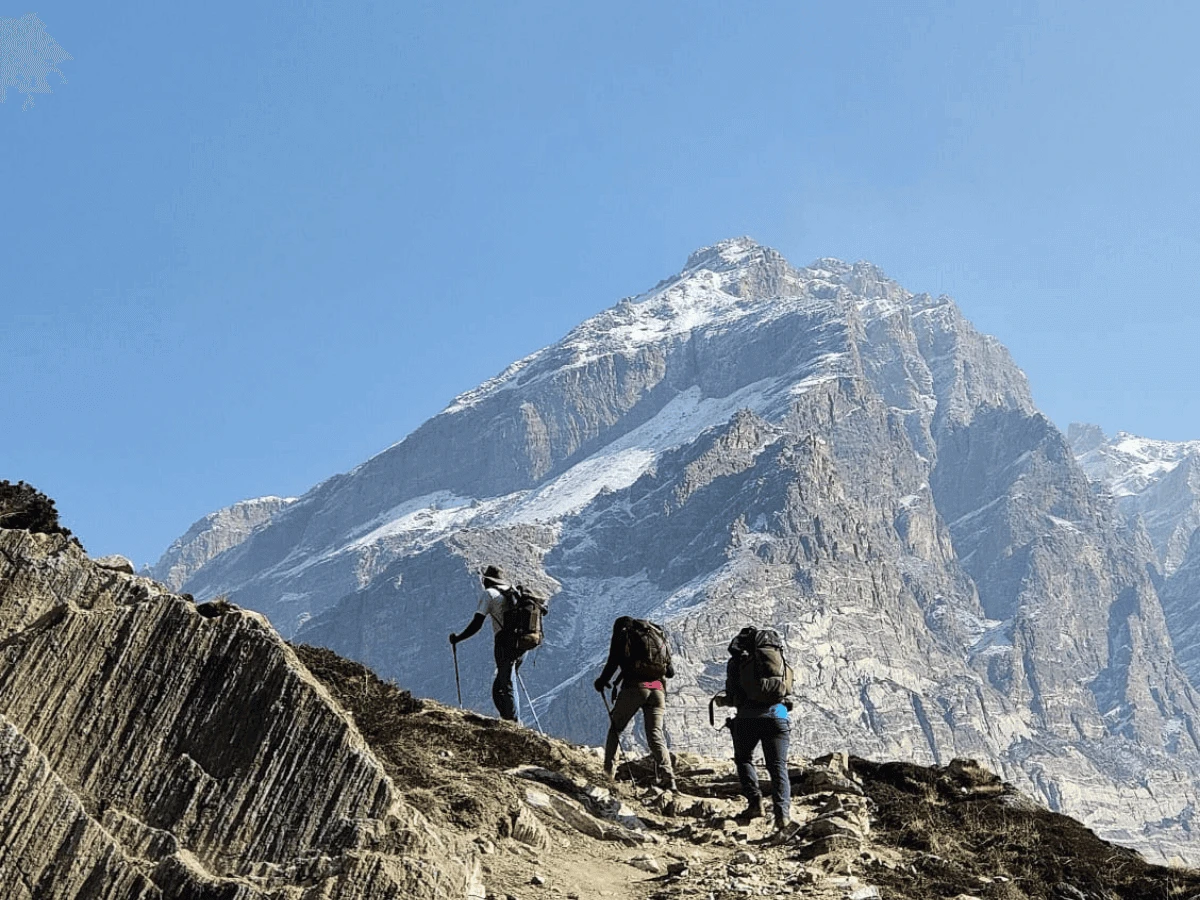The Nar Phu Valley Trek is a remote, high-altitude journey in the Annapurna region of Nepal that takes you to the isolated Tibetan‐style villages of Nar and Phu. Situated near the Tibetan border in the Manang district, Nar (4,180 m) and Phu (4150m) are ancient villages whose inhabitants are descended from the Khampa tribes of Tibet. These settlements are located in one of Nepal’s last pristine valleys, surrounded by towering vistas such as Annapurna II, Gangapurna, Tilicho, Manaslu, and Himlung Himal.
Opened for foreigners only in the 1990s, the Nar Phu Valley Trek receives only a few trekkers because it lies in a restricted area. It means you will experience a uniquely less-crowded, off-the-beaten-path.
The trail weaves through dramatic canyons, glacial streams, and Tibetan Buddhist monasteries, providing trekkers with an authentic glimpse of Himalayan culture and breathtaking mountain scenery.
Nar and Phu are twin villages situated at roughly 4,100–4,200 meters in the remote northern Annapurna Himalaya. Phu is located at an elevation of about 4,080 m (13,400 ft), while Nar is slightly higher at 4,180 m. Both villages are nestled in high river valleys, above the tree line, and are surrounded by dramatic Himalayan peaks.
Nar is often described as an alpine village, whereas Phu is referred to as its granary village. The traditional houses of these villages are made of stone and wood and are scattered among yak-grazed meadows. Likewise, the local people practice a mix of Tibetan Buddhism and the Bon religion.
Why Should You Choose the 10-Day Nar Phu Valley Trek?
The Nar Phu trek is prized by adventurous trekkers for its raw beauty, authentic culture, and solitude. Unlike popular routes like the Everest Base Camp Trek, Nar Phu is far less crowded. You’ll often have the trail and teahouses to yourself. The valley is a “hidden jewel” of the Himalaya, so choosing this trek rewards you with a pioneering spirit.
Key reasons to choose Nar Phu:
Pristine Scenery: Trek through lush lower forests and dramatic Trans-Himalayan desert landscapes. The route offers jaw-dropping close-up views of Annapurna II (7,937 m), Gangapurna, Pisang Peak, Tilicho Peak, Manaslu (8,163m), and more. You cross alpine passes (Kang La 5,320 m) that grant panoramic vistas of the high peaks.
Cultural Immersion: Nar and Phu preserve an ancient Tibetan-Buddhist culture. Encounter centuries-old monasteries like the 300-year-old Tashi Lhakhang Gompa near Phu, dotted with prayer flags and gold-roofed gompas.
Off-the-Beaten-Path Adventure: This is an intimate journey through remote valleys. The trails meander past river gorges and red-brown cliffs without the tourist infrastructure of popular circuits. You’ll see very few other trekkers, giving a sense of wilderness and discovery.
Challenge and Accomplishment: For fit trekkers, Nar Phu is an exhilarating challenge. Conquering the high passes and rugged terrain brings a great sense of achievement.
In short, you should choose the Nar Phu Valley Trek if you seek a remote area trek in Nepal that is high-altitude, culturally rich, and less crowded. It’s ideal for travellers who’ve already done the common trails and want a fresh, authentic Himalayan experience.
Explore the Isolated and Remote Himalayan Villages of Nar Phu
The trek to Nar Phu leads you through isolated settlements and alpine pastures. Starting from the Annapurna Circuit trailhead in Koto, you gradually leave behind the pine forests and typical Annapurna villages. The trail climbs across cascading waterfalls and river gorges into the high Trans-Himalayan zone.
- Meta and Chyamje: After leaving Koto (2,600 m), you hike through terraced farms and small villages like Meta (3,560 m).
- Phu Gaon (Phu Village): Arriving at Phu (4,080 m), you enter the highest green valley. Phu has a small guesthouse cluster around a meadow, with stone cottages and a sacred gompa.
- Nar Phedi to Nar Village: Leaving Phu, the trail drops steeply to Nar Phedi (3,490 m) and then climbs up to Nar village (4,110 m). Nar is perched on a ridge with spectacular views down to the Marsyangdi River gorge and back toward Phu.
- Trans-Himalayan Plateau: Beyond Nar, the landscape opens to a wide, high valley. The trail to Kang La Pass (5,320 m) crosses a cold, windswept plateau with yak herders’ tented camps. This is classic Trans-Himalayan terrain: yellow grasslands, sky-blue lakes, and stark, snow-clad peaks.
10-Day Nar Phu Valley Trek Difficulty for Beginners
The Nar Phu trek is moderately challenging to difficult, especially for beginners. It’s not technical, but it is a high-altitude trek with long days of hiking and steep sections. You will cross Kang La Pass (5,320 m), which is probably the challenging part of the trek. This High pass demands strong commitment and endurance to pass through. Likewise, the Nar Phu Valley Trek route is rugged and passes through a remote part of the Himalayas. Unlike the Annapurna Circuit Trek, another trip in the Annapurna Region, this trip doesn't involve high altitude.
To combat these conditions, trekkers must be in good physical shape. Previous high-altitude trekking experience can be beneficial. Therefore, even if you are a beginner, with decent physical fitness and training, you can do this trek easily.
How Much Does the 10-Day Nar Phu Valley Trek Cost?
The total cost of a Nar Phu Valley Trek varies depending on factors like group size, season, and services. Mountain Eco Trails offers competitive all-inclusive packages (trekking permits, guides, lodges, meals, transportation, etc.) tailored to your needs.
Taking all factors together, a full-service 10-day Nar Phu trek with Mountain Eco Trails typically runs in the range of USD 950 to 1250 per person (based on double occupancy, mid-range lodges). Whatever your budget, we tailor the itinerary; for example, our Short Nar Phu 10-day package is ideal for groups with limited time. However, if you decide to choose a half-board package that includes a Guide, Permits, and transportation, then the Nar Phu Valley Trekking cost starts from USD 650 per person.






